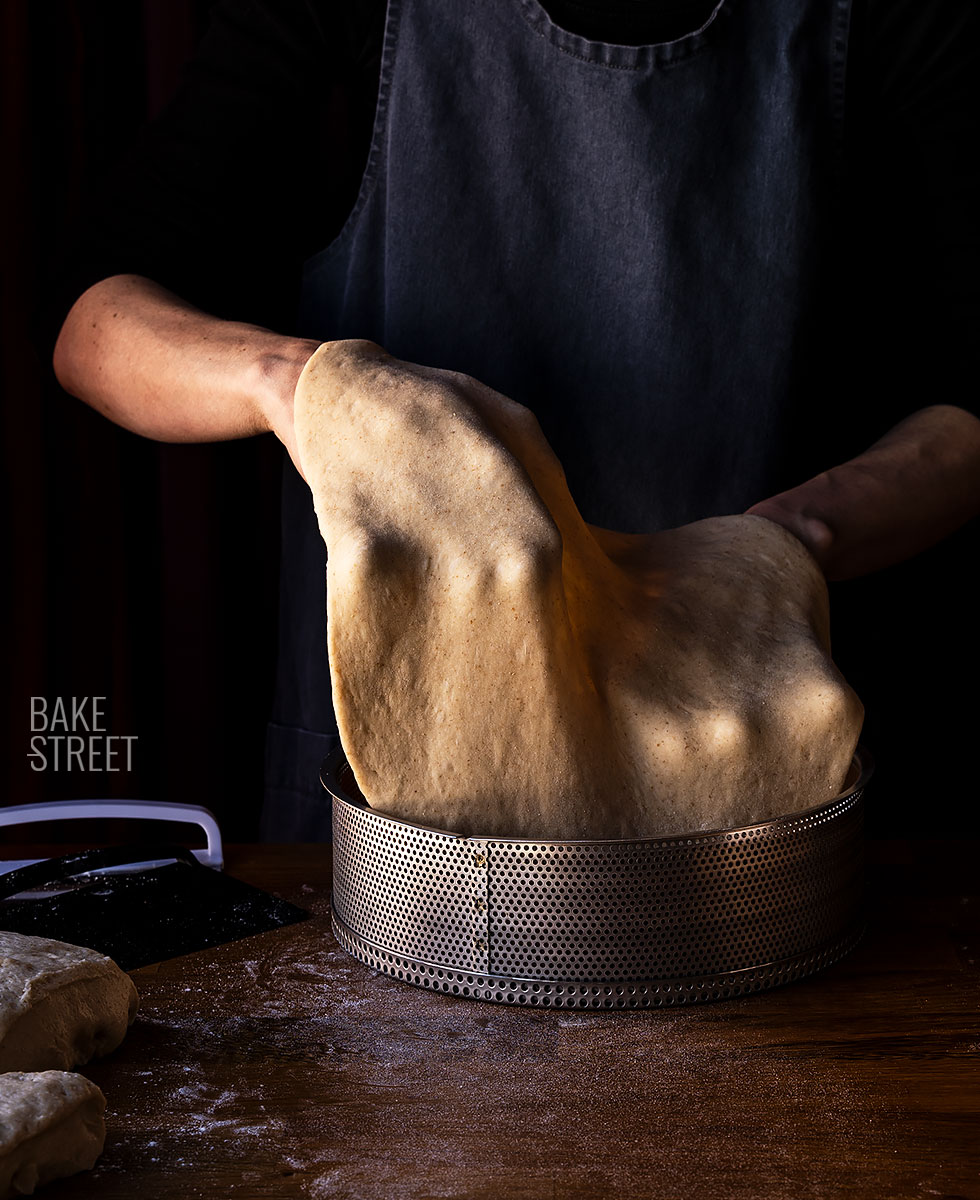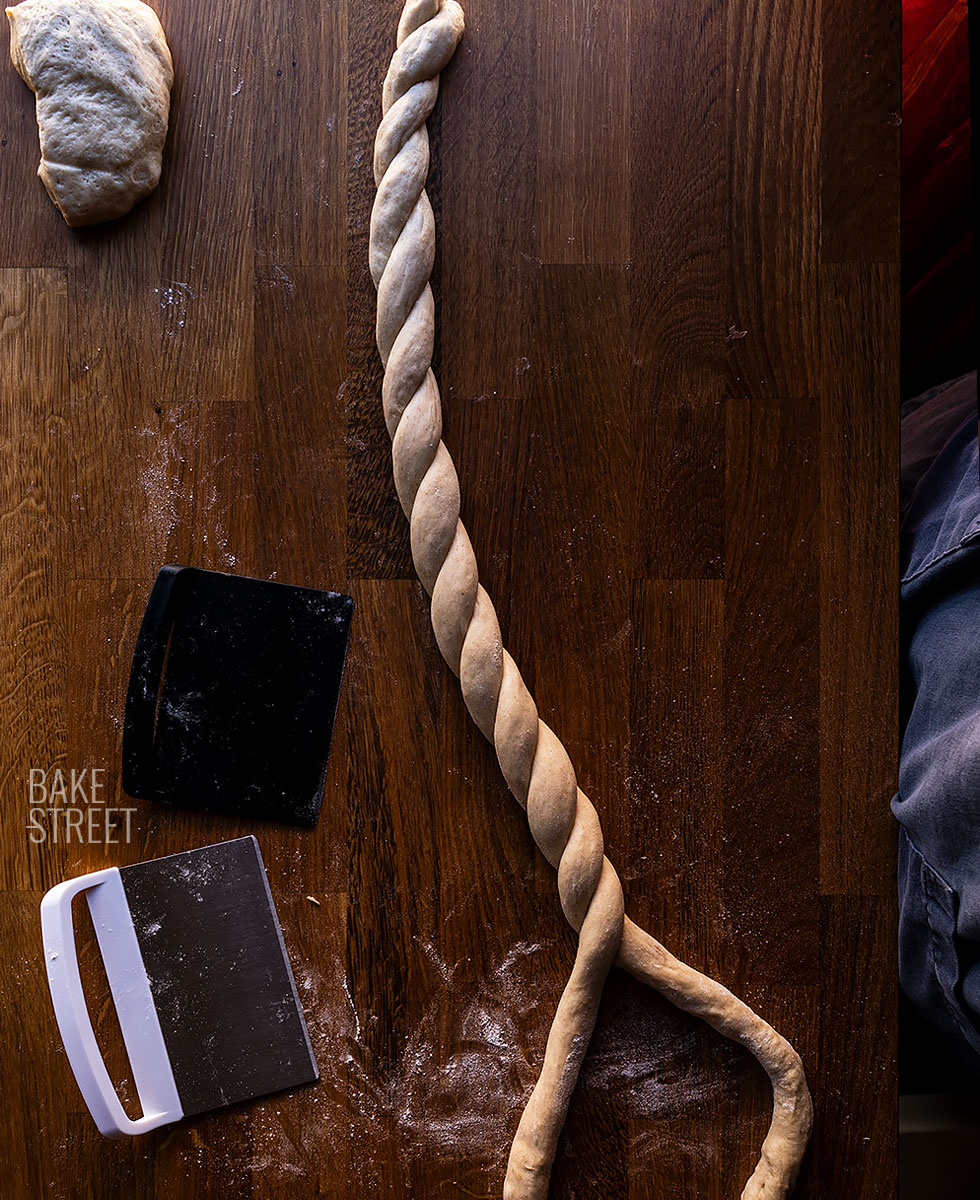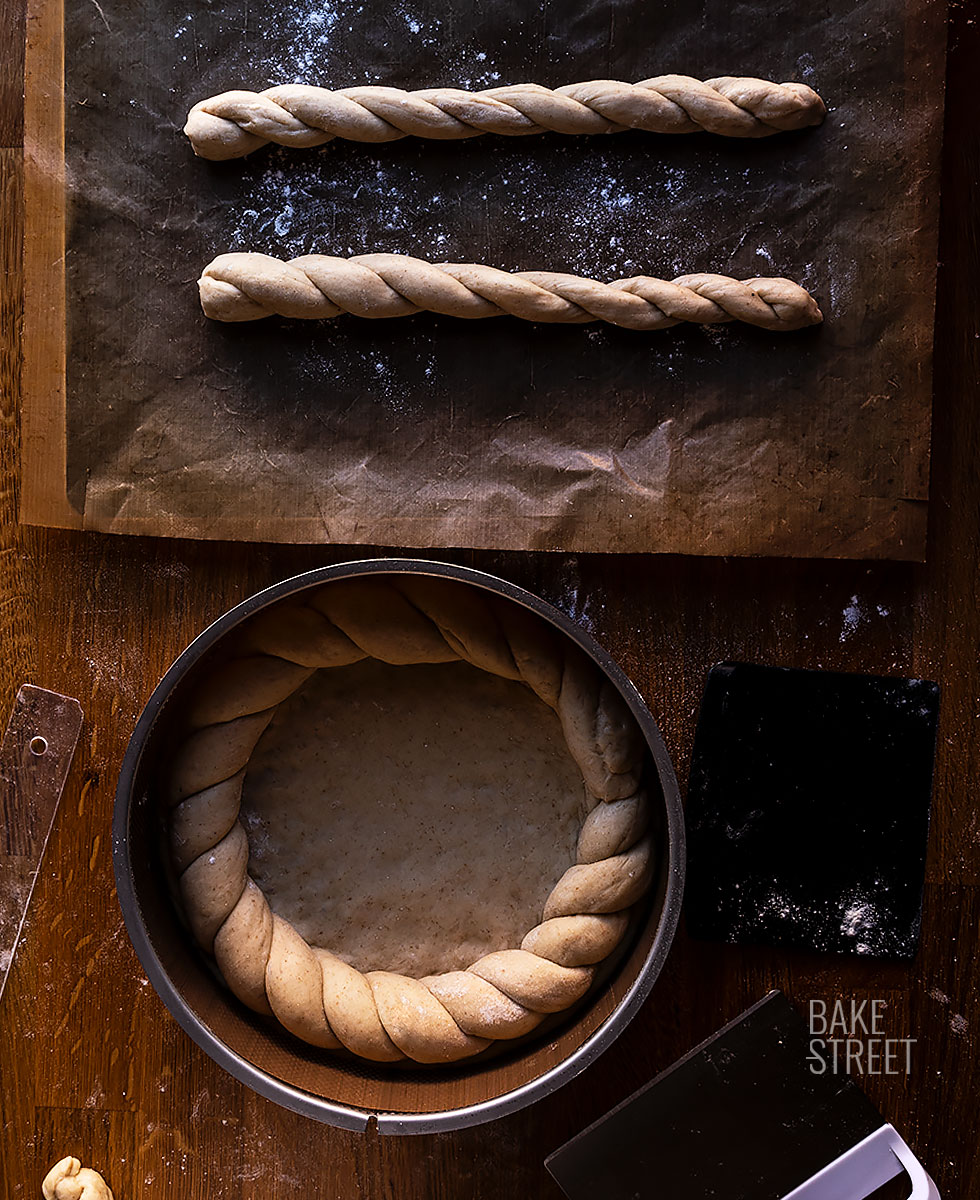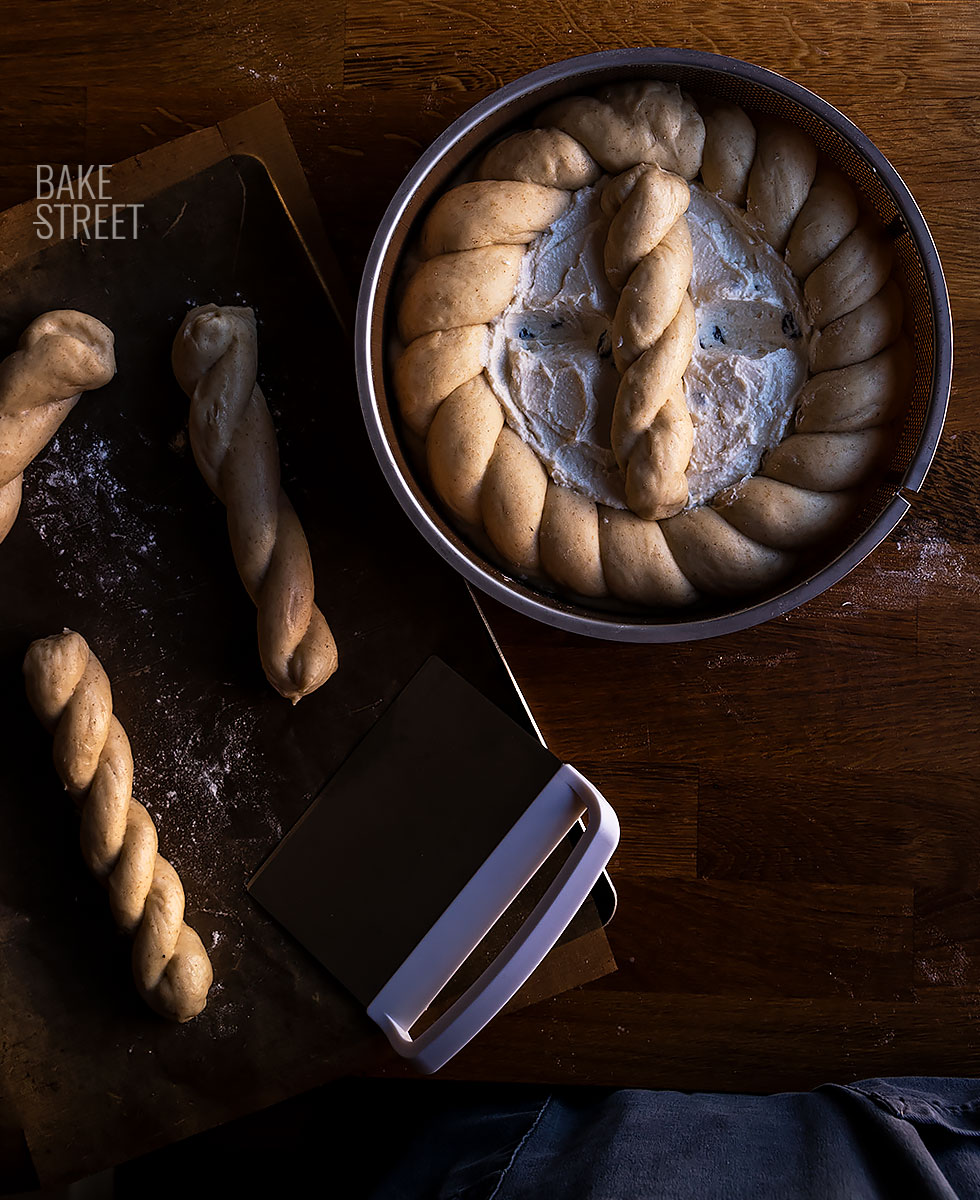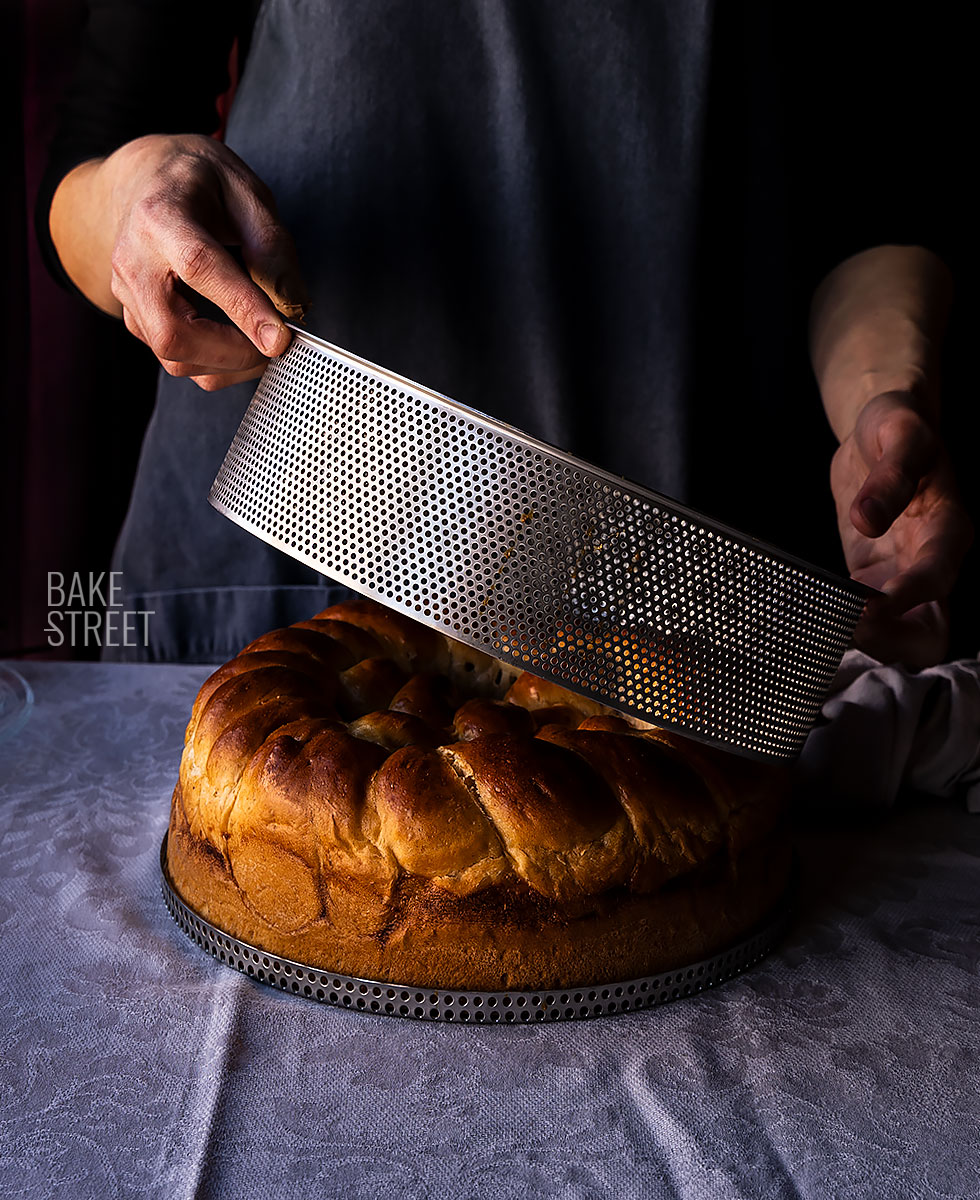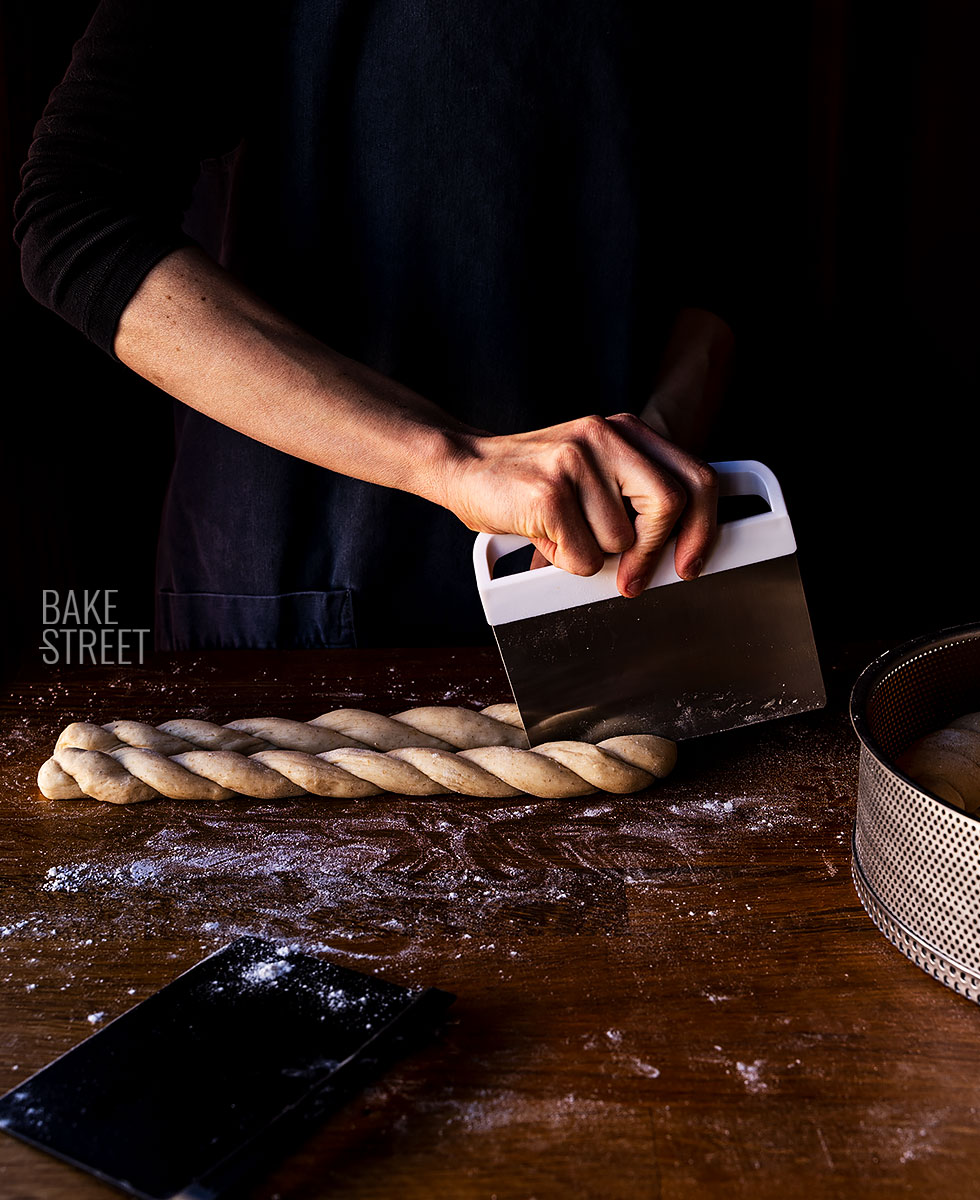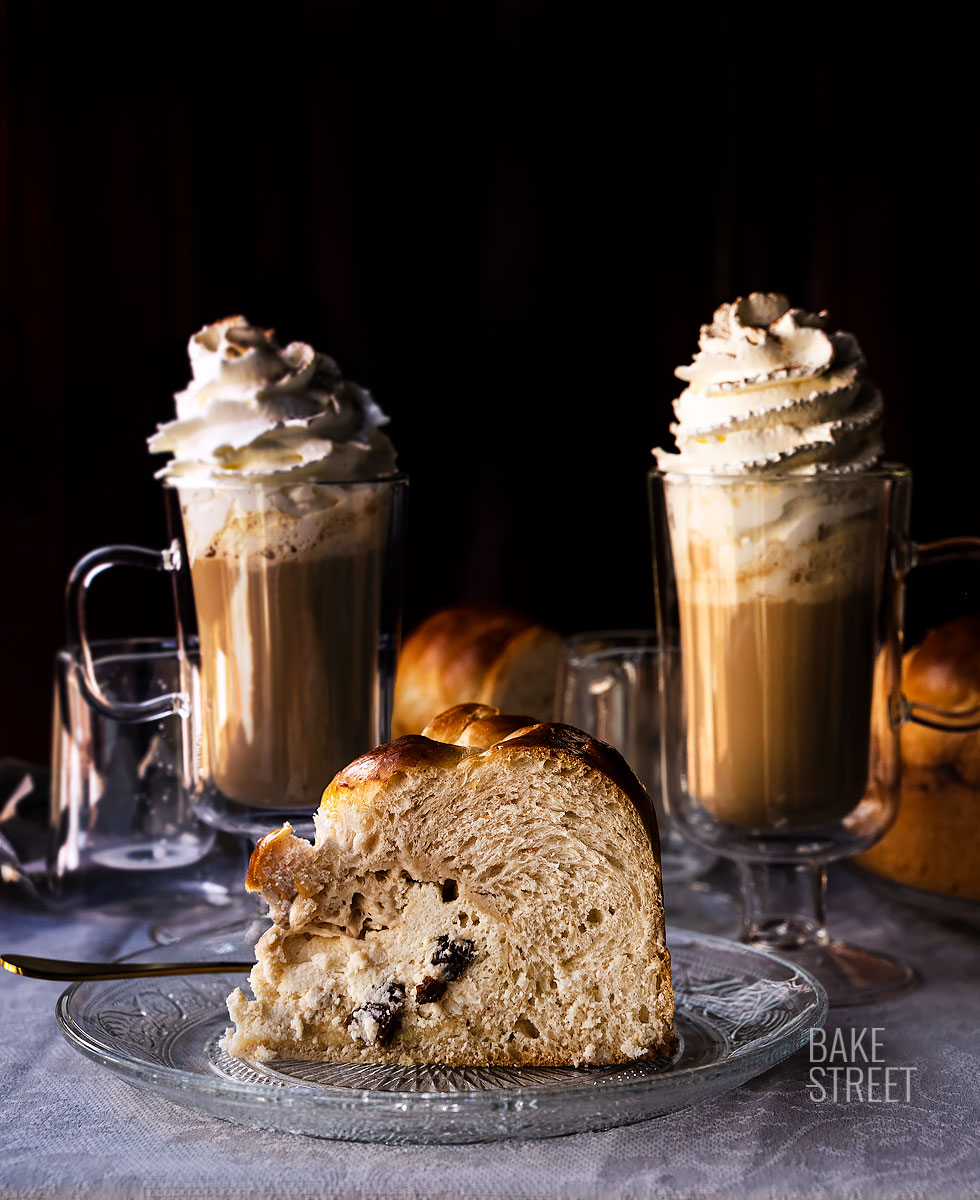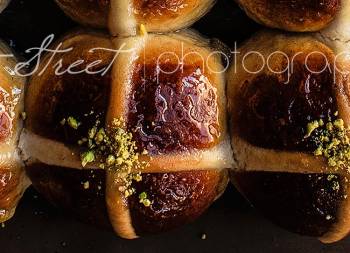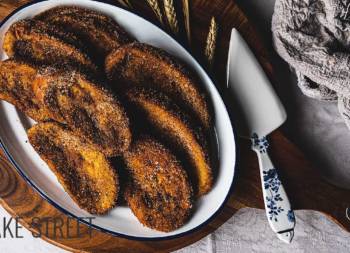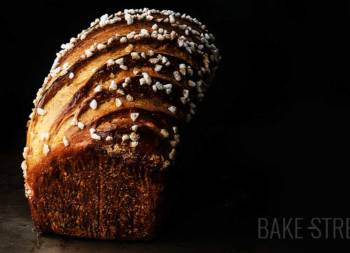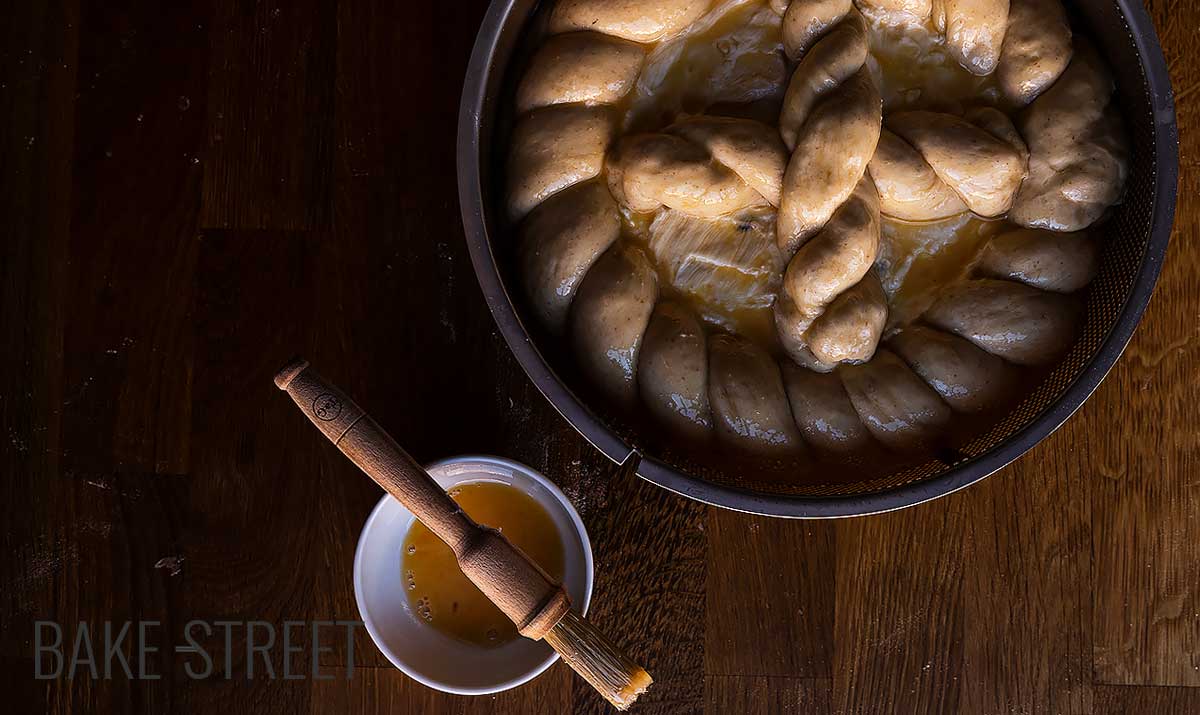
Pasca cu Branza – Easter cheese-filled cake
When Easter comes, we enter a time when we are inundated with a lot of wonderful and extraordinary sweet recipes, such as torrijas (recipe similar toFrench toast). But, there is a great variety of sweets around the world that are also consumed at this time of the year and should not be missed. Like this Pasca cu Branza – Easter cheese-filled cake.
To give you a brief introduction, it is a pastry made with a tender and spongy dough, with a filling made with subtly sweet and flavoured cheese. An incredible delicacy of Romanian gastronomy.

Pasca cu Branza origin.
In Romania, when Easter comes, it is traditional to prepare many recipes such as the famous Cozonac. But another of the dishes that form part of their tables is this one, which combines a spongy dough and a creamy filling.
It is said that this pastry is related to a bread eaten by the Jews during Passover, called in Hebrew “mat” –מצה. It was an unleavened dough, made with a mixture of water and one of the 5 grains; wheat, rye, barley, oats or spelt. In Jewish tradition, Pasca is nicknamed “the bread of the poor” לחם עוני, due to the fact that poor Jews continued to eat it even after Passover.
The book of “Exodus” – Cartea Exodului tells us that the Jews left Egypt so quickly that they did not have time to prepare leavened bread. In memory of that time and experience, the Jews only eat Pasca for eight days (instead of the usual leavened bread).
The custom of eating lamb and Pasca during Passover is related to the Jewish ritual of Passover. In the Jewish tradition, lamb is ritually eaten with unleavened bread and bitter herbs (maror in Hebrew מרור), to remind us of the hardships suffered in Egyptian slavery.
At the Last Supper, Jesus and the apostles ate lamb according to Jewish ritual, and the unleavened bread is represented by Pasca. For Christians, the lamb, the Pasca and the wine are symbols with new meanings: the Lamb is Jesus Christ, who accepts his sacrifice. The broken Pasca and the poured out wine signify the sacrifice of Christ.
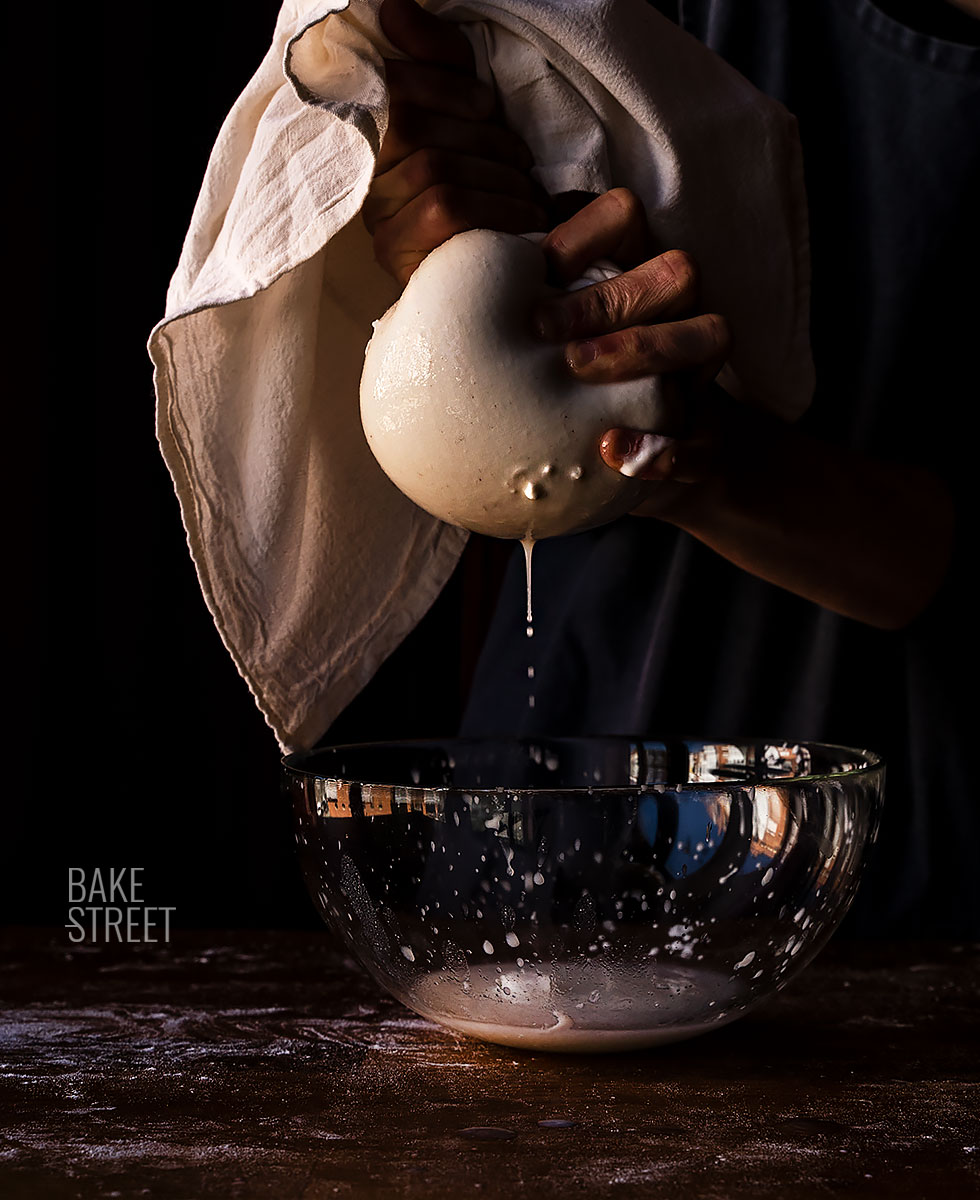
Pască is prepared on the eve of the Resurrection.
The real Pască is the one that is cut into small pieces and brought to church to be sanctified (it may be related to the consecrated host). The pieces of Pască are taken home and kept for believers to partake of God’s blessing, which is believed to have the power to ward off illness and trouble.
Its adaptation to Christian tradition has turned it into a pastry that consists not only of a leavened dough, but also of a sweet cheese filling garnished with sultanas.
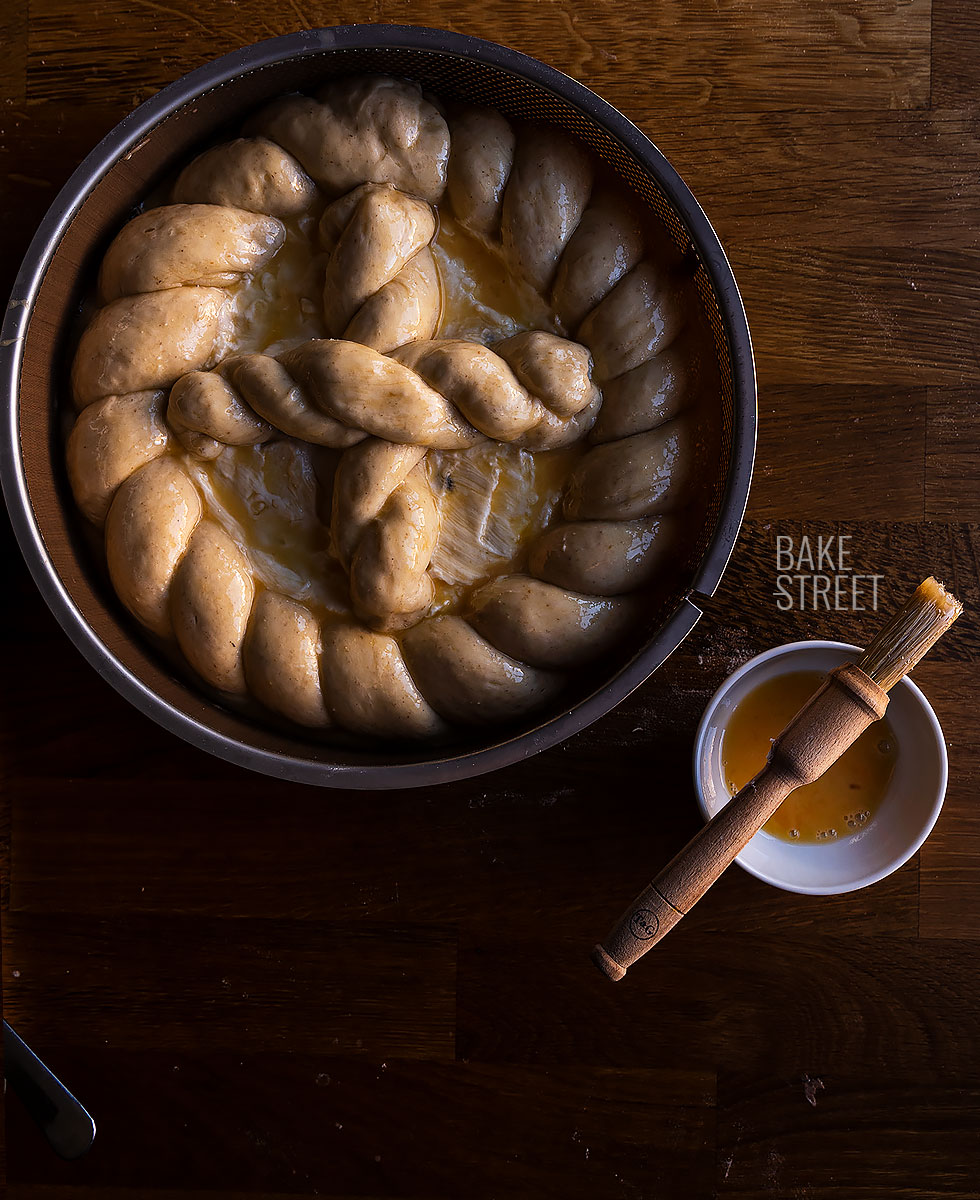
Recipe Pasca cu Branza
Recipe adapted by Lalena.ro
DOUGH:
- 560 g bread flour, W=290
- 125 g whole milk
- 125 g water
- 4,5 g dry yeast or 13,5 g fresh yeast
- 3 large eggs (about 167 g)
- 125 g sugar
- 65 g unsalted butter, cold and cut into cubes
- 7,5 g salt
FILLING:
- 500 g ricotta cheese
- 45 g sugar
- 1 large egg
- 1 Tbsp olive oil
- 1/4 tsp baking powder
- 35 g semolina divided into 2 parts (one half for the filling and the other for sprinkling)
- 50 g sultanas
- 2 tsp vanilla extract
- 3 g salt
FOR BRUSHING:
- beaten egg
Instructions
FIRST DAY
Make Pasca cu Branza dough.
- In the bowl of the KitchenAid or kneader, add all the ingredients except the butter.
- Knead until the dough is developed and smooth. Start kneading on speed 1 and increase to speed 2. It will take about 15-20 minutes.
- Once the dough has developed, add the cold butter. We will do this in two batches and wait to add the second when the first has been completely integrated. The dough will be smooth, elastic and perfectly developed.
- Make a ball and put it in an airtight container, previously greased.
Make bulk fermentation.
- Leave the dough at room temperature until it has risen to 1/3 of its volume. In my case it was 1 hour at 69,8ºF/21ºC.
- Refrigerate until the next day.
SECOND DAY
Temper the dough and divide it to make Pasca cu Branza.
- Take the dough out of the cold and allow it to temper before working with it. The dough should have risen a little more than double overnight.
- It will need more or less time depending on the outside temperature. In my case it was 1 hour and 10 minutes to 68ºF/20ºC.
- Turn the dough out onto a clean work surface and gently degas the dough.
- Cut approximately 1/3 of the total dough to make the base. In my case it weighed 380 g.
- Gently pre-shape the dough into a round shape. With the help of a rolling pin, roll out the dough to the diameter of our perforated Buyer mould (24 cm).
- Place the base inside the mould and gently adjust.

- From the remaining dough, cut about 1/3 again. In my case I divided the dough into two portions; a large 480 g portion to make the outer braid and a smaller 220 g portion to make the top decorative braid.
Shape the decoration.
- Take the larger piece and divide it into two equal parts.
- Roll out and shape a cord with one of the pieces to a length of 95 cm. To do this, shape the piece into a cylinder and slide both hands over the surface to give it length.
- Repeat the same process with the other piece.
- Braid the two strands and place them inside the mould, making sure that the braid sticks to the mould. Seal the ends.

- Cover the mould with film.
- To plait the upper decoration, proceed in the same way.
- Divide the small piece into two equal parts and roll out each of them, this time giving a length of 60 cm to each of them.
- Braid in the same way as before.
- Once it is plaited, cut it in half and place it on a tray lined with Teflon or silpat. Cover with plastic film.

Make final proof.
- Let the dough double its volume, the final rising time will depend on the outside temperature. In my case it was 2 1/2 hours to 80,6ºF/27ºC controlled.
- The small braid must rise separately from the mould. For this reason we place it on a separate tray.
Make the filling.
- Place a cheesecloth over a bowl and put the ricotta cheese inside.
- Hold the cheesecloth by joining the corners, lift it up and begin to exert a little force to drain the cheese.
- Press until the whey is almost completely removed.
- Tie a knot in the cloth and leave to rest on a sieve or tied to the sink for 30 minutes. Check that the dough has risen beforehand.
- Transfer the cheese to a bowl and add the rest of the ingredients.
- Mix until a homogeneous mixture is obtained.
Place the filling inside.
- When you see that there are about 15-20 minutes left to finish the rising time, fill the pasca.
- Preheat the oven to 320ºF/160ºC with heat up and down.
- Sprinkle two spoonfuls of semolina on the inside base of the mould, not on the braid. Put the filling in the central hole and smooth the surface.
- With the help of a spoon, create a hole in the filling.
- Place one of the parts of the braided yeast dough on the tray.
- Again create a hollow to place the other braided piece and create a cross. Press gently on the central part that joins the cross.

Bake.
- Brush the entire surface with beaten egg.
- Place in the oven at medium-high and bake for 70 minutes or until the temperature of the dough shows 190,4º-194ºF/88º-90ºC when pierced with a digital baking thermometer.
- It is important to keep an eye on the colour of the dough and, if necessary, cover it with a sheet of aluminium foil to prevent it from browning too much.
- Remove the baking tin from the oven and place on a wire rack. Leave the dough to rest in the mould for 30 minutes.
- After this time, remove from the mould and leave to cool completely on a wire rack.
- Ideally, it should be left to rest for 5-6 hours before eating to allow the filling to cool, cook and set properly.
- Slice and serve.

Notes
- In my case I have used a W=290 strong flour. If you use a lower strength flour, you should adjust the amount of liquids in the recipe so that the dough is not too hydrated. The consistency of the dough is slightly sticky, but easy to work and handle.
- The process is divided into 2 days to make it more manageable.
- When shaping the dough strands, we should do it on a clean work surface. If we dust with flour, it will be very difficult, almost impossible, to roll out the dough. If the dough sticks to the work surface, dust very lightly with flour.

- There is no need to grease or dust this mould with flour. It comes with a Teflon interior that prevents the dough from sticking to the mould, as well as making it much, much easier to remove from the mould afterwards.
- For the filling, the ideal is to use granulated ricotta cheese, it is drier and the result is much better. In my case I only found this creamier variety.
- Whether we use granulated or creamy ricotta, we must drain it with the cheesecloth to remove as much liquid as possible.
- Sultanas can be replaced with another dried fruit of your choice.
- The filling can be flavoured with vanilla or a liqueur, such as rum for example.
- I recommend that you control the whole baking process to avoid over-browning or over-baking the dough too long and leaving it dry. The result is a very soft, silky and tender dough.
- It can be kept, wrapped in film, for 24 hours at room temperature. After this time, refrigerated for up to 3 days.

This Easter, don't hesitate to make this Pasca cu Branza and surprise your family. Because I assure you that you will surprise them a lot.
The preparation process, despite seeming otherwise, is quite simple to carry out. There are many steps, but it does not require much difficulty. The baking process, thanks to the Buyer perforated mould, is impeccable.
When we use moulds to bake doughs, the material they are made of and the way they distribute the heat is very important. In this case, it helps to distribute it evenly, achieving a perfect baking that, in addition, does not burn the dough. For me, this is something very important to highlight because it makes the final result glorious or, on the contrary, not so good.
I hope you like it a lot, so much that this Easter we fill the networks with this Pasca cu Branza ;)
Big hugs and happy Friday!
Eva
Sources: Mega-Image.ro, Ro.Wikipedia
This post contains affiliated links
